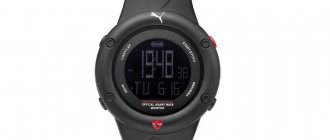The last 12 months have flown by in an instant. It seems like just recently I wrote a review of Series 5 - and now I’m doing the same for Series 6. I think the lost spring and half of summer are to blame.
The pandemic has forced every conscious person to closely monitor their health. The new Apple Watch hits the mark in this regard: even more health and activity monitoring features are combined with hardware improvements and behind-the-scenes battery optimizations.
Overall it's almost like the S5, just with a solution to their biggest problem.
I've been wearing the 40mm Apple Watch Series 6 for exactly a week. Moreover, their most striking model, PRODUCT (RED), which many will more often look at in a store or in a photo than on their own hands. I am completely satisfied, I even liked it within a week.
But I’ve taken off the braided monobracelet so far and I don’t know when I’ll wear it. Love for him gave way to caution in just a couple of days.
I'll go through everything in order.
A new kit is for everyone, and new cases are for the amateur
I unboxed the Apple Watch Series 6 a week ago in a separate article. There is also a video clip there.
I won’t repeat myself, I’ll just say that I support eliminating charging in watch boxes. That's enough, we don't need blocks. There are already a lot of them for everyone who was not born yesterday.
So let's leave the set aside and take a better look at the watch.
For the first time, Apple Watch has been released in both blue and red colors of the PRODUCT (RED) series. I liked the first ones only in the picture, but in real life I was less impressed by all the five available body colors - silver, space grey, gold, blue and red.
So, the red is really as red as it appears in the photographs. And it is simply impossible to hide it.
Not every belt will fit it , that's for sure. You can try combinations like white and red, some flashy blue. The black leather one looks good, both the old one, with a metal clasp, and the new one, with magnets inside.
For now I have settled on the new version of the PRODUCT (RED) sports bracelet. It just matches the watch perfectly and literally glows red in the sun. Definitely the most successful nylon one that Apple has released so far.
You need to dress appropriately for such a watch if it is important to achieve its appropriateness in your image. Find something at least partially red in outerwear, shoes and accessories - and that’s fine.
You can also score and just know that everyone can see your watch from afar. During the week they came up to me several times and asked about them, so they definitely attract attention .
Finally, the same red woven monobracelet, or its black version, called “charcoal”, will suit the red watch. This is what I wore for the first few days, but now I have stopped.
Where to start learning?
Time for a child is the concept of something vague, non-existent, because it cannot be touched or touched. Of course, children understand that life moves forward, but it is still difficult for them to formulate this idea.
Learning to tell time using a clock should be done gradually , from small to large, so that the child does not get confused in his head.
To begin with, it is worth explaining to the child what time is, which is called the future, present and past. You can remember these concepts using the simplest examples from life. For example:
- Yesterday we were visiting my grandfather - that’s the past;
- now we are playing in the park - this is the present;
- Tomorrow morning we will go to kindergarten - this is the future.
Examples should be given as simple as possible, which are understandable and interesting to a little person, then he will quickly learn and grasp the basic concepts of time
You also need to teach your child to easily understand all the seasons and name their main signs. For example, if it snows, it means winter has come. When the flowers bloom and the grass turns green, it’s spring. In summer the hot sun shines and you can eat ice cream, and in autumn the birds fly south and leaves fall from the trees.
When the baby learns about the seasons, you need to move on to the names of the months . He must understand well which season this or that month belongs to. Then explain that a month has 28, 29, 30 or 31 days, and that it consists of weeks that have 7 days.
Calendar for learning the seasons and months
Mono bracelets are good, but with their own characteristics
A regular monobracelet (3,900 rubles) looks more like an elastic band than a sports strap with a clasp. They are similar only tactilely, but physically and functionally they are completely different.
I am afraid to take off and put on the monobracelet even after a week. All the time it seems that it is either about to break ( it will NOT break, it is very durable ), or if you loosen your grip, the watch will fly to the side, as if from a slingshot.
But the bracelet is fixed perfectly on the hand. You won’t take it off by accident, not at all. And it won’t unfasten while moving. It just looks a bit bland, even more boring than a standard sports strap.
All this also applies to a braided monobracelet. It costs the same as a new leather or Milanese one (8900 rubles), so it is nominally included in the class of “elite” belts.
At first I liked it more than all the bracelets. I walked and slept in it day after day. Size 4 with the required size 6 (don’t ask how it happened) within a week it stretched to an acceptable size, and I no longer experienced any discomfort. And the combination with the red watch seemed ideal to me personally.
On the fourth day I looked at it and suddenly realized: one of the links had stretched out and was sticking out very noticeably from the side. It was as if the sweater had torn on a nail.
When did it happen? Maybe I hit something sharp with the bracelet. Maybe I accidentally tampered with my fingernail when I put it on again. I don’t remember that moment, but I remember very well how I hovered and looked at this hanging ring, thinking: “well done, I killed a normal thing in less than a week.”
With these thoughts in mind, I decided to look at the reviews on English-language Twitter to see if there were similar stories. I found quite a lot right away.
The braided monobracelet is very durable in itself, but sharp or simply thin objects can lead to consequences similar to mine. By carefully pulling the other links along the line of weaving, I eventually aligned the bracelet, and the next day I could no longer find that place.
There were no consequences for the strap, but I decided to try something else. I unpacked the new wicker sports PRODUCT (RED), put it on and... that’s it, I still wear it to this day.
So if you are planning to take a braided monobracelet, be aware that it is often not as durable as a nylon or sports strap.
Active movements
Some people spend quite a lot of time getting from home to work and back. You can use this time profitably. Try cycling or walking to work. Too difficult? Then you can at least get off the bus one stop earlier and walk the rest of the way.
Getting to work by bike
The always-on display has become brighter
After a year with the Series 5, I no longer want to use a watch without an always-on display. As they say, the best is the enemy of the good. It looks great and allows you to personalize your watch better. Plus, it's convenient to always see the time without tapping on the screen or raising your wrist until it automatically activates.
The Series 6 has a brighter display . Apple attributes this to the capabilities of the new, energy-efficient S6 processor. Perhaps the matrix itself has changed.
The brightness has been increased primarily for the dimmed screen. Now it’s easier to see time on the street, under the sun. There is also a difference when the display is activated, but it is not always possible to notice it, even if the Series 6 is worn next to it for comparison.
The dimensions of the dials have remained the same since the Series 4: small at 40 mm, larger at 44 mm with resolutions of 324x394 and 368x448 pixels, respectively. The picture is very clear, rich - pure Retina in every sense. And the OLED matrix guarantees deep black color for menu and dial backgrounds, merging with the frame.
In all of this, it's easy to forget that Series 6 doesn't have Force Touch . The watch does not recognize how hard you press the screen.
On paper or for the owner of an old Watch, this will seem terrible: previously, a lot of the system was tied specifically to strong taps. But watchOS 7 completely freed the OS from this need, adapting the logic of all menus and interfaces. Now all this is done simply by long pressing, like on the iPhone 11 or iPad.
To be honest, I like it even better.
Look at your watch more often and keep track of your time
People easily fit really important and necessary things into their schedule. So, for example, if you need to see a doctor and get an x-ray, you will not think about whether there is time for this, but make an appointment without delay.
No one claims that exercise is as important as going to the clinic, but even the busiest person can find time for it if he wants. To understand this, take one day and watch how you spend it. If before this it seemed to you that you really don’t have a single free minute, then after such a small experiment you will change your mind. By the way, you can talk on the phone while riding a bike or walking, and listen to audiobooks while doing exercises.
The new processor is pleasing and noticeable in operation
Last year's Apple Watch threw a wrench into the sequence of watch processor updates. The S5 chip used in the Series 5 turned out to be an S4 with an always-on display controller and compass.
No one was objectively upset by this. Even the “old” processor worked fine on watchOS 6 for the next year. But progress cannot be stopped!
Series 6 is powered by a dual-core Apple S6 chip – which, in turn, is based on the A13 Bionic, which has proven itself in the iPhone 11.
The net performance gain over the S5 and S4 is about 20 percent. If you look a little further, at Series 3 and S3, the difference is absolutely gigantic - 120 percent, that is, more than two times.
Compared to the Series 6, the Series 3 feels downright slow. This is a globally different experience of use, superimposed on other differences between models (especially displays).
If you used fourth or fifth generation AW, you would hardly complain about their efficiency. That other watches still work perfectly and quickly on watchOS 7 . After them, it’s simply sad to pick up smart watches from other manufacturers, even the newest models.
S6 is not only a “startup for the future”. A Series 5 owner will notice the difference today. Switching between watch faces is a little faster.
App Store apps, Workouts, even Music open earlier. The upgrade is especially obvious when setting up the new Memoji watch face from watchOS 7. On Series 5 it is thought about more often than on the new model .
In general, I'm only talking about moments of difference. The old “vochi” have not yet turned into a pumpkin. But these moments are generally more noticeable when working with a watch than with a smartphone. After all, you use AW in a significantly smaller volume: from the wrist, with your hand raised, for a short time. Therefore, you expect an instant reaction from them.
No time for sports?
In my opinion, the problem of lack of time can be divided into two parts. The first is purely organizational, when you just need to slightly redistribute your daily routine and give up useless or completely unnecessary tasks. The second is ideological, associated with a person’s internal attitudes and education.
I'll start with the organizational ones. And I’m sure you can easily complement my thoughts in the comments, which I will be very happy about!
First of all, I would like to note that I regularly read books on management. I learn a lot of interesting things from them. For example, that the average person spends at least 3-5 hours a day on completely useless activities. At the same time, he tells everyone that he works without raising his head and constantly complains about the lack of time. Curious, isn't it?
New function for measuring blood oxygen levels - works, but not at ECG level
The degree of oxygen saturation in the blood, also known as “saturation,” is an important indicator of human health. Oxygen is necessary for the cells of the body. With its deficiency in the blood, health worsens and the risk of disease increases.
To implement the ability to measure saturation levels, Apple redesigned the lower block of Apple Watch's skin sensors. It is divided into four LED clusters and the same number of photodiodes.
The data collection algorithm is described as follows:
Green, red and infrared LEDs emit light onto the blood vessels in the wrist, and photodiodes measure the intensity of the reflected rays. Then innovative algorithms come into play. They calculate the color of the blood, which determines its oxygen saturation level.
– quote from Apple website
Apple had a cool moment in the announcement when they turned on the red band. My LEDs, however, always light up green . Either red remains invisible to humans, or I have a special form of color blindness. But you also see green in the photo, right?
The watch measures saturation throughout the day automatically, without your participation. They also do this while you sleep unless you manually turn the feature off in the Watch app.
To measure the oxygen level in your blood manually, you open the Blood Oxygen application on your watch (the icon is like Yin and Yang, only with a blue and red circle).
Next, Apple recommends not tightening the strap too tightly, moving the watch a little further away from your palm along your wrist, and keeping your hand completely static without moving your fingers.
If you violate the recommendations, you will either get an incorrect measurement, or the watch will start “swearing” already in the process of taking readings: turn your wrist with the display up, do not move your fingers, and so on. The easiest way is to place your hand on the table before starting and keep it that way until the end.
After reading the warnings, start the measurement and wait.
After 15 seconds, the screen will display your blood oxygen level. Naturally, it is not absolute , this is not a blood test. Percentages are the ratio of the obtained indicator to the one recommended by doctors: ideally it should be from 95 to 100%.
The history of measurements is available in the Health application on iPhone, Breathing section. Here you will see a graph and the spread of results in specified periods. If you click the Show more data button, data from automatic tests during sleep and at high altitudes will be displayed separately.
I gave watches to everyone in the office. The results were interesting. For others, they showed the recommended 95-100% the first time. But when I do the measurements, I usually get 93 or 92%.
It has never happened 100% from my hand. So I have no doubt about the functionality of the feature, because at least I always have less oxygen in my blood than others. I tried different bracelets, if anything.
But this week I remember several situations when, from a stationary hand, stationary AW 6 showed three significantly different indicators one after another: for example, 92, 98, then 93 percent.
It's clear why Apple's website has this warning in fine print:
These Blood Oxygen applications are not intended for medical purposes, consultation with a doctor, or self-diagnosis. Can be used to assess general physical condition.
– quote from Apple website
I translate: there is an error. That is, the results of measuring oxygen levels are worth taking a closer look at, but not as actual results that require an immediate visit to a doctor.
So “Oxygen in the blood” is a good option to passively look at the dynamics of indicators without any problems. And then listen to yourself more carefully if a drop in oxygen levels is recorded, worsens and, most importantly, is accompanied by other symptoms. Which is also not bad.
This is why the function has been working in Russia from day one, unlike ECG. It simply does not claim to be medically accurate and is only a source of interesting information for the owner - which means it does not require certification according to medical standards.
Fitness is a long-term investment, not an expense.
Well, this is me moving from organizational aspects to ideological ones. My grandmother once lamented that I was very tired during training. And I couldn’t convince my grandmother that everything was exactly the opposite! I got much more out of my classes than I spent on them. It's true!
As you get older, you notice age-related health problems that arise. And woe if you don’t immediately draw the right conclusions. More precisely, there is only one conclusion - you need to maintain and improve your physical capabilities. Otherwise, you simply lose your ability to work. Slowly but surely.
I don’t know any of my peers (40-50 years old) who could do pull-ups on the horizontal bar more than 2-3 times. And even more so, there are no people who can make a one-way exit or a two-power exit! I am able to do 25-30 pull-ups at any time of the year, and at least 5-10 pull-ups! Do you think there is a difference in our levels of health and performance? How different are we in appearance? But 40-50 years can become a blooming age. Only by this age do we acquire at least some experience, intelligence, and education. Isn’t it offensive to think about a sad ending at this stage?
Investment is when you think today about what will happen in a few years. This ability distinguishes adults and mature people. I hope you are one of them!
Investments in health and education always pay off!
Battery life was surprising after the Series 5, and charging was faster
Last year I wrote about how I tried to get my 40mm Series 5 to last more than half a day. Various tricks were used, from turning off the always-on display (a very strange thing, I agree) to prohibiting the automatic activation of the screen when you raise your wrist.
Today the situation with that watch has not gotten better, I just got used to it and periodically recharge the watch at work.
It’s all the more surprising how long the Apple Watch Series 6 of the same diagonal lasts. I didn’t turn off anything in them; on the contrary, I activated all possible background functions, from the heart rate monitor to the sound level meter.
Now every evening I come home with at least 30% charge. Sometimes 40-45%. This is the 40mm version, again, which has a smaller battery in every way than the 44mm model. From there the situation should be even more positive.
For this we must say “thank you” to several factors: the absence of a Force Touch layer, an 8% increase in battery, optimizations in the S6 processor. And I know what you will ask next.
How does the watch discharge in Sleep mode? If I still don’t go to bed with the day’s remaining charge (iOS reminds me that the watch needs to be recharged), but remove it from charging at 100%, then in the morning I see 92-93% of the charge. Now I try to sleep at least 6-7 hours, so we get a battery discharge rate of about 1% per hour.
For me, this is an excellent result, removing concerns about sleeping with AW on my arm. In addition, this 8% can be returned back in 10 minutes using a magnetic pancake cable.
What adds confidence is that the charging speed has increased by 20% . This allows you to recharge the watch noticeably faster than before. On average, in an hour and a half you will get back 100% of the battery and a new one and a half days of battery life.
So the only obvious disadvantage of Series 5 has definitely been corrected.
When to introduce your child to watches
What a child must be able to do in order to correctly tell time using a clock:
1. Count from 1 to 100.
Let the child write numbers from 1 to 60 on a piece of paper. While writing, let him say it out loud.
- If this skill has not yet been practiced, hang this piece of paper in a visible place and have your child repeat it regularly.
- Whenever possible, show your baby single and double digit numbers and ask them to name them correctly.
- Be sure to praise and encourage them for success.
2. Count by fives.
Let the child write the numbers, preferably while saying them: 5, 10, 15, 20, 25, 30, 35, 40, 45, 50, 55, 60.
- Compose a song “Counting by fives” for any motive. The main thing is that it is easy to remember. You can add clapping, stomping, jumping, etc. to the song. For example, for all numbers ending in 5 we squat, for all numbers ending in 0 we stand up.
- Sing this song regularly so that your child learns to count by fives forward and backward.
3. Have a general understanding of time.
The child must understand the meaning of the concepts “morning”, “day”, “evening”, “night”.
- Let the child come up with and say what associations he has with each time of day.
- Make sure your child understands that after night comes morning, then day, etc.
- You can ask: “What do we do in the morning?”, “What happens in the evening?”, “What will you do at night?” and so on.
4. Visually recognize numbers from 1 to 12, be able to write them.
5. Know what “before”, “after”, “quarter”, “half” are.
If your child already knows and can do all this, you can safely explain to him the time on the clock.
Sleep monitoring, alas, surprised me on the contrary - it’s still superficial
When Apple announced the sleep tracking feature in watchOS 7 in the summer, I sat up in my chair – finally! Now the watch that makes you happy during the day will also help at night. At the same time, I’ll at least figure out why I almost always sleep poorly and feel overwhelmed around the clock.
The first betas on the Series 5 disappointed me. Sleep tracking was then effectively limited to the very name of the feature. The clock simply showed on a graph when you were sleeping and when you were not. That's all. No activity, no movements, no periods of calm, no sleep phases, much less any recommendations...
I myself know when I sleep. The memory does not fade when I go to the restroom in the middle of the night. In general, there was some sediment. But I decided to hold off on drawing conclusions until the final firmware release.
At the September presentation, the Series 6 was shown and sleep monitoring was mentioned again. For some reason I decided: maybe the feature was simply reserved for new watches, and on old ones it will work in that limited format. Well, it can’t be that this is all.
Alas, that’s really all, and nothing has changed in the end.
The Sleep function itself is amazingly thought out, there’s no other way to put it. Apple directly and indirectly pushes you towards stability of the regime, the most competent approach.
You set up on iOS the time period in which you plan to sleep - and set a sleep goal in hours that you consider ideal.
Then, according to the plan you set, both iPhone and Apple Watch systematically go into Sleep mode. As it approaches, you receive notifications in the following format: charge your iPhone if it’s low; charge the watch if the charge level is low; You'll be going to bed soon, if anything.
As soon as hour X arrives, the iPhone screen dims to a super low level that you can’t even set manually. It no longer hurts your eyes if you wake up and want to take a look. The “Do not disturb” mode is activated strictly until the time of the desired awakening. Even the lock screen changes: it becomes two-level, hides notifications and is not removed by an accidental swipe when unlocking via Face ID.
The Apple Watch behaves in a similar way. The always active screen turns off and dims. The display now shows monochrome numbers for the current time, alarm and battery level. The mode is completely silent, without vibrations or sounds .
When the alarm goes off, both the phone and the watch begin to increasingly play a melody. Then they will congratulate you on the beginning of the morning, report the weather on a separate screen and display notifications that have accumulated during sleep.
And if you wake up earlier, your watch and iPhone will notice. After some time of activity, Sleep mode will be prompted to deactivate. The alarm will turn off automatically.
All this was very well implemented, from beginning to end.
That's all monitoring of sleep quality.
But...sleep monitoring in a truly useful form has never emerged. And to be honest, I'm really disappointed by this.
Much simpler trackers have similar functions. Until the last minute I hoped to see the implementation from Apple. And against this background, something strange became clear to me.
Here is the Health application. Thanks to data from the iPhone and Apple Watch, a large amount of personal information is now collected there. Both the gadgets themselves and the data save lives in targeted ways every month: for some people an ECG will notify them, for others they will call doctors if they fall.
Why is the Health app still unable to monitor your health globally?
All this data that Apple receives (and also does a lot to protect it) - why not analyze it properly right on the device, look at coincidences, identify patterns and, based on all this, give targeted, relevant advice on improving the quality of life?
There are a variety of situations that Apple Watch can alert you to: increased heart rate, falls, irregular heart rhythm, low blood oxygen levels. This is good.
But there is no such AI and/or machine learning that would look at the entire cross-section of collected data and tell you that something is wrong with your health. In Health there is no logical center , the core of the idea. Just a lot of data and that's it. It’s like you’re taking tests, but to understand their meaning, you need to dig much deeper, go to the doctors.
A bunch of subscriptions to paid services will soon be collected in Apple One. It's time to collect Health data in some Apple Health+. Make an ecosystem here too. And yes, sleep monitoring needs improvement.
But specifically, all this has only an indirect relation to Series 6, so excuse the long remark. We had to keep expectations in check.
Studying the clock
Now you need to teach your child to understand time. Parents should tell him the following.
- There are 24 hours in a day. That is, morning, day, evening and night together equal 24 hours.
- There are only 12 digits on the watch dial, so the small day hand goes through a full circle twice.
- It should be said that the division of the dial can be compared to the slices of an orange: several slices (each of which is equivalent to a segment of 5 minutes) together form a whole - the dial.
Now you need to show your child that when the hour hand points to a number, it points to the hour. For example, if it is on the number 4, it means it is 4 o'clock. Using special simulator watches, you need to practice setting the hour hand to one or another number and telling the time.
Then the task becomes more complicated, it is necessary to explain that the position of the minute hand at the number “12” means the exact time. Also, using a cardboard dial, try setting the hour, six o’clock and other options.
A little about what will not happen for Apple Watch for Russia
In Russia, the following are not officially sold or serviced by ASC:
■ Apple Watch Edition: all steel and titanium models ■ Apple Watch Hermes: all models ■ Apple Watch Series 6 and SE with LTE: all models
The new Family Setup feature, which allows a family member to set up an Apple Watch without their own iPhone and manage it as if it were their own, requires an LTE module in the watch. So in Russia it is de jure unavailable.
ECG also does not work in Apple Watch for Russia (officially). And before the end of the year, we won’t have a new Apple Fitness+ service that is entirely tied to the Apple Watch.
Most of all, it’s a pity that there are no steel models; I adore them both for their appearance and for the sapphire crystal.
All that remains is to breathe and wait for better times. Moreover, in 2020, better times will not hurt anyone.
Form the right habit
Choose a time of day when you are more or less free (from thirty minutes to two hours) and devote it to training. For a habit to form, you need to perform the same action for a month. To do this, get yourself a calendar and mark the selected time as training time for the month ahead.
No matter how great your desire is to skip training for at least one day and do something else, do not give in to the temptation. In thirty days, you won’t even notice how everyday exercise, which previously could have caused you not very pleasant emotions, will turn into a useful habit and will be performed automatically.










